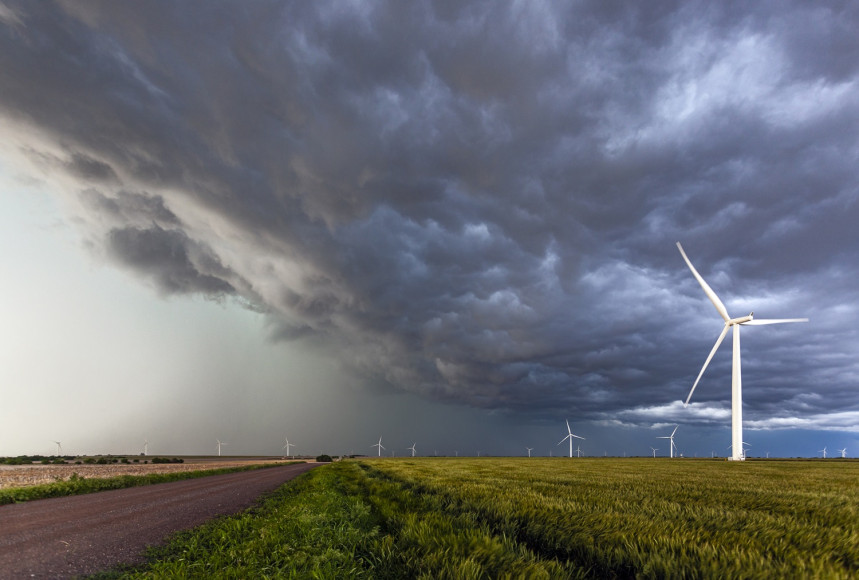As the frequency and severity of extreme weather events rise, regulatory bodies and investors are placing greater emphasis on climate-related disclosures, making it essential for companies to integrate climate considerations into their strategic planning. Businesses must proactively assess their vulnerability and resilience to such disruptions.
To help your business prepare for this reality, we've put together a primer on what climate scenario analysis entails, why it's indispensable for businesses today, and the key steps involved in conducting a robust analysis.
Understanding Climate Scenario Analysis
What is climate scenario analysis?
Climate scenario analysis is a strategic tool used by businesses to evaluate the potential impacts of climate change on their operations, assets, and overall business strategy. It involves creating and analyzing a range of plausible future scenarios based on different assumptions about climate policies, technological advancements, and socio-economic trends. These scenarios help organizations assess the potential physical and transition risks associated with climate change and identify opportunities that may arise.
The analysis typically includes both qualitative and quantitative assessments. Qualitative assessments involve narrative descriptions of different future states, while quantitative assessments use models and data to estimate the financial implications of each scenario. Examining these differing scenarios helps businesses better understand the range of possible futures and develop strategies that are robust across different potential outcomes.
How climate scenario analysis helps identify risks and opportunities
Climate scenario analysis allows companies to evaluate a range of potential future scenarios and their impacts on business operations. Key risks and opportunities include:
- Increased frequency and severity of storms, floods, and heatwaves that can disrupt supply chains, damage infrastructure, and impact workforce availability.
- The regulatory changes and shifting market demands, as well as the opportunities to innovate and improve operational efficiencies that come with a global economy shifting towards low-carbon technologies.
Importance of meeting investor and stakeholder expectations
Investors and stakeholders are increasingly concerned about the sustainability and resilience of the companies they support. Climate scenario analysis is a vital step in enhancing stakeholder confidence and trust. By transparently disclosing climate risks and demonstrating proactive management strategies, businesses can strengthen their reputations, attract sustainable investments, and foster long-term relationships with key stakeholders.
Overview of Frameworks and Regulations
Several frameworks and regulations guide businesses in conducting and reporting climate scenario analysis. By adhering to these guidelines, companies can ensure their scenario analyses are comprehensive, consistent, and aligned with best practices.
These frameworks and regulations provide a structured approach for identifying, assessing, and disclosing climate-related risks and opportunities, which helps businesses build credibility with stakeholders and meet regulatory expectations.
Frameworks
The Task Force on Climate-Related Financial Disclosures (TCFD) provides a comprehensive framework for companies to assess and disclose their climate-related risks and opportunities. Scenario analysis is a core recommendation, helping businesses understand potential impacts under different climate futures.
CDP (Carbon Disclosure Project)
CDP questionnaires are widely used by institutional investors and companies to evaluate a company's climate preparedness. Utilizing climate change scenario analysis to inform the management of climate-related risks and opportunities and disclose results and relevant actions through the CDP questionnaire can help demonstrate sound climate change management strategies to a company’s stakeholders.
IFRS (International Financial Reporting Standards)
The IFRS Foundation has introduced IFRS S1 and S2 standards. The IFRS S1 standard sets general requirements for disclosing sustainability-related financial information, which can include climate-related risks and opportunities. The IFRS S2 standard is specifically focused on climate-related disclosures, with scenario analysis being a key component.
Regulations
The SEC (Securities and Exchange Commission)
The SEC has proposed rules mandating that public companies disclose their climate-related risks. If a company uses scenario analysis to assess climate-related risks, results of such analysis and a description of methodology need to be reported.
EU CSRD (Corporate Sustainability Reporting Directive)
This directive mandates disclosure of resilience of an organization’s strategy and business model in relation to climate change, including the use of scenario analysis, making it a core part of sustainability reporting.
US FAR (Federal Acquisition Regulation)
Federal agencies have proposed to amend the Federal Acquisition Regulation (FAR) to require certain federal contractors to disclose climate-related financial risks through the CDP questionnaire. The proposed rule does not mandate the use of scenario analysis, but it can facilitate assessments of climate-related risks.
California Senate Bills 261 (CA SB-261)
The California Senate Bill 261 requires disclosure of climate-related financial risks for companies that generate total annual revenues of more than $5 million and do businesses in California. The proposed rule does not mandate the use of scenario analysis, but it can facilitate assessments of climate risks.
Risk Scenarios
Climate scenario analysis involves understanding both physical and transition risks. Physical risk scenarios focus on the direct impacts of climate change, such as extreme weather events, sea level rise, and temperature fluctuations, which can affect infrastructure, operations, and supply chains. Transition risk scenarios, on the other hand, address the economic, regulatory, and technological changes associated with the shift to a low-carbon economy.
Physical risk scenarios
The following physical risk scenarios are based on Representative Concentration Pathways (RCPs), which describe how atmospheric pollution and the amount of heat trapped by greenhouse gases (radiative forcing) will change over time. The full list of RCPs is available here, but we’ve highlighted key ones below.
IPCC RCP 1.9
The IPCC RCP 1.9 scenario is the IPCC’s lowest emission scenario, aimed at keeping global warming below 1.5°C by the end of the century, aligning with the aspirational goal of the Paris Agreement.
IPCC RCP 4.5
The IPCC RCP 4.5 scenario represents a “planned transition” to a low-carbon economy, where significant energy transition activities are delayed by 15-20 years from now. In this intermediate stabilization pathway, the increase in radiative forcing is stabilized at about 4.5 watts per square meter after 2100.
IPCC RCP 8.5
RCP 8.5 is the IPCC’s high-end scenario, where the amount of heat trapped by greenhouse gases exceeds 8.5 watts per square meter by 2100 and keeps increasing afterwards. This scenario leads to a global temperature rise of 4-5 degrees Celsius above pre-industrial levels by 2100.
Transition risk scenarios
Transition risk scenarios are frameworks used to assess the potential impacts of the transition to a low-carbon economy on businesses and investments. These scenarios consider a range of factors that could affect companies as the world shifts towards more sustainable practices, including regulatory changes, market dynamics, and technological advancements.
IEA Net Zero Emissions by 2050 Scenario
The IEA Net Zero Emissions by 2050 Scenario outlines policies and technologies necessary for achieving a net-zero economy by 2050, aiming to limit global warming to under 1.5 degrees Celsius by 2100. It includes aggressive decarbonization through rapid deployment of renewables, electrification of transport, and energy efficiency improvements. Policy measures involve stringent carbon pricing, green technology subsidies, and fossil fuel phase-outs. Technological innovations like CCS, hydrogen energy, and advanced batteries are crucial, alongside global cooperation on climate policies and financial aid for developing countries.
IEA Announced Pledges Scenario
The IEA Announced Pledges Scenario assumes that all announced but not yet implemented global climate policies will be enacted, presenting a more optimistic outlook than current policies. It anticipates governments fulfilling commitments like those in the Paris Agreement and national climate action plans. This scenario includes increased investment in clean technologies such as renewable energy, electric vehicles, and sustainable infrastructure. It also forecasts the expansion of carbon trading schemes to incentivize emissions reductions.
The IEA Stated Policies Scenario, also known as the Current Policies Scenario, assumes a conservative approach where only existing climate policies continue without significant new commitments or advancements. This scenario features:
- No major new climate policies are introduced, maintaining the status quo.
- Technological development proceeds slowly with reliance on existing technologies.
- Emissions decrease at a pace insufficient to meet ambitious climate goals.
- Emphasis on economic stability over aggressive climate action, minimizing market disruptions.
Selecting Appropriate Climate Scenarios for Your Business
Selecting appropriate climate scenarios involves a thorough assessment of your business’s specific risks, opportunities, and strategic goals. This assessment is crucial for understanding how climate change impacts could affect your operations, supply chains, and market positioning. Engaging in third-party assessments can provide valuable insights and expertise in identifying and evaluating these risks and opportunities objectively.
Third-party assessments bring independent analysis and specialized knowledge to the process, offering a comprehensive view of potential climate impacts that may not be apparent from internal perspectives alone.
Explore how Antea Group can help you with climate scenario analysis.
Want more news and insights like this?
Sign up for our monthly e-newsletter, The New Leaf. Our goal is to keep you updated, educated, and even a bit entertained as it relates to all things EHS and sustainability.
Have any questions?
Contact us to discuss your environment, health, safety, and sustainability needs today.






